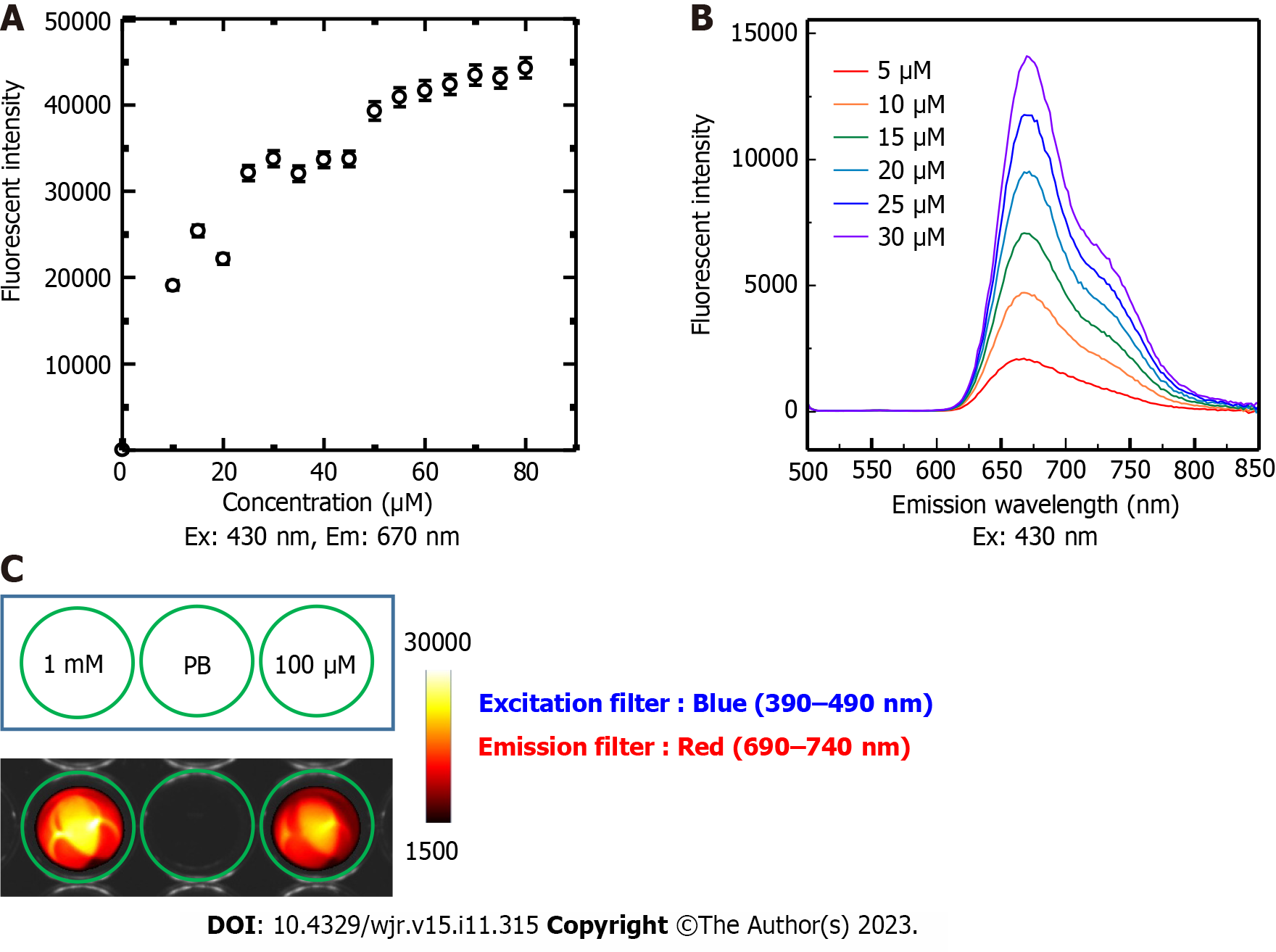Copyright
©The Author(s) 2023.
World J Radiol. Nov 28, 2023; 15(11): 315-323
Published online Nov 28, 2023. doi: 10.4329/wjr.v15.i11.315
Published online Nov 28, 2023. doi: 10.4329/wjr.v15.i11.315
Figure 3 Tetrakis (4-carboxyphenyl) porphyrin fluorescence emission.
A: Fluorescence emission intensity of tetrakis (4-carboxyphenyl) porphyrin (TCPP) prepared at different concentrations (5, 10, 15, 20, 25, 30, 35, 40, 45, 50, 55, 60, 65, 70, 75, and 80 µmol/L in PB) measured by setting the excitation wavelength to 430 nm and emission wavelength to 670 nm. The relationship is linear up to approximately 30 µmol/L; B: The fluorescence spectra of low TCPP concentrations (5, 10, 15, 20, 25, and 30 µmol/L) were measured with the excitation wavelength set to 430 nm; C: Visualization of TCPP fluorescence emission using a light-emitting diode light source, blue light excitation filter (390–490 nm), and red light emission filter (690–740 nm). Em: Emission wavelength; Ex: Excitation wavelength; mM: mmol/L; PB: Phosphate buffer; μM: μmol/L.
- Citation: Aung W, Tsuji AB, Rikiyama K, Nishikido F, Obara S, Higashi T. Imaging assessment of photosensitizer emission induced by radionuclide-derived Cherenkov radiation using charge-coupled device optical imaging and long-pass filters. World J Radiol 2023; 15(11): 315-323
- URL: https://www.wjgnet.com/1949-8470/full/v15/i11/315.htm
- DOI: https://dx.doi.org/10.4329/wjr.v15.i11.315









